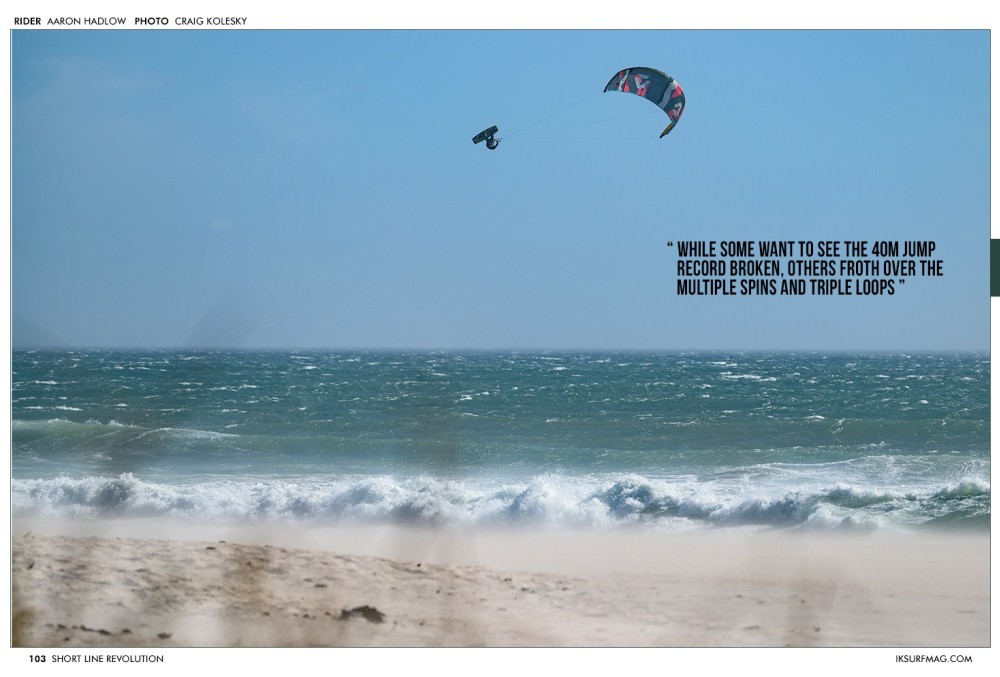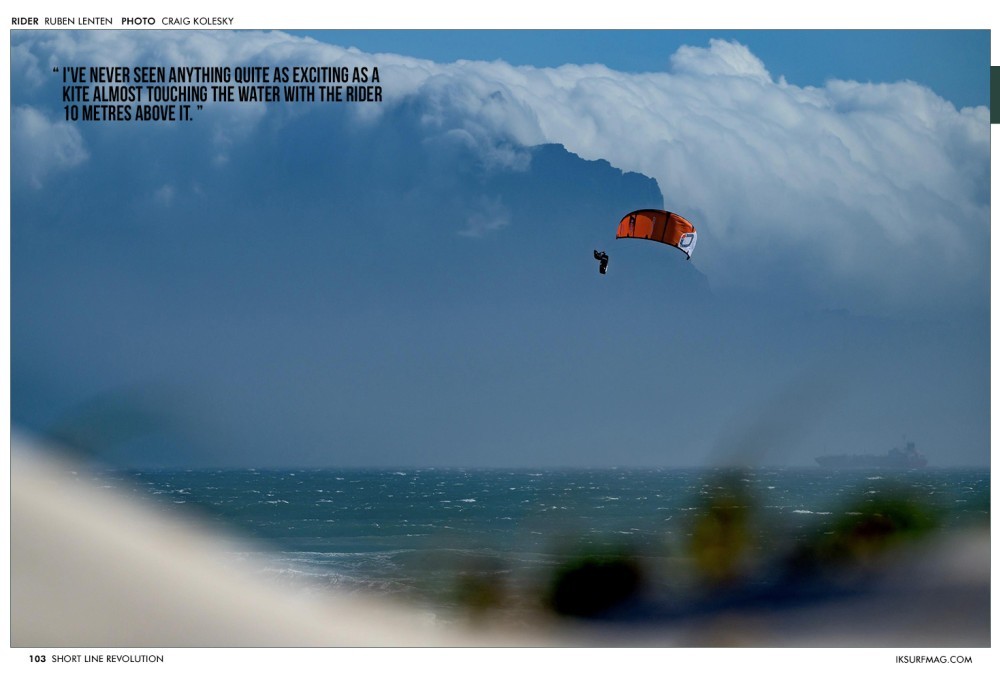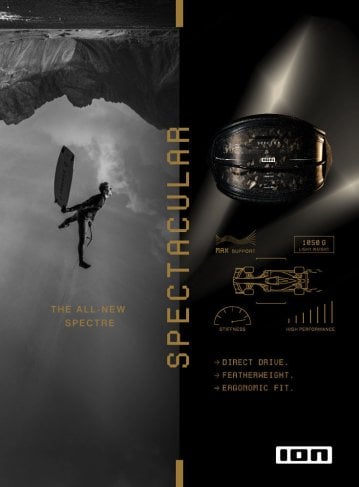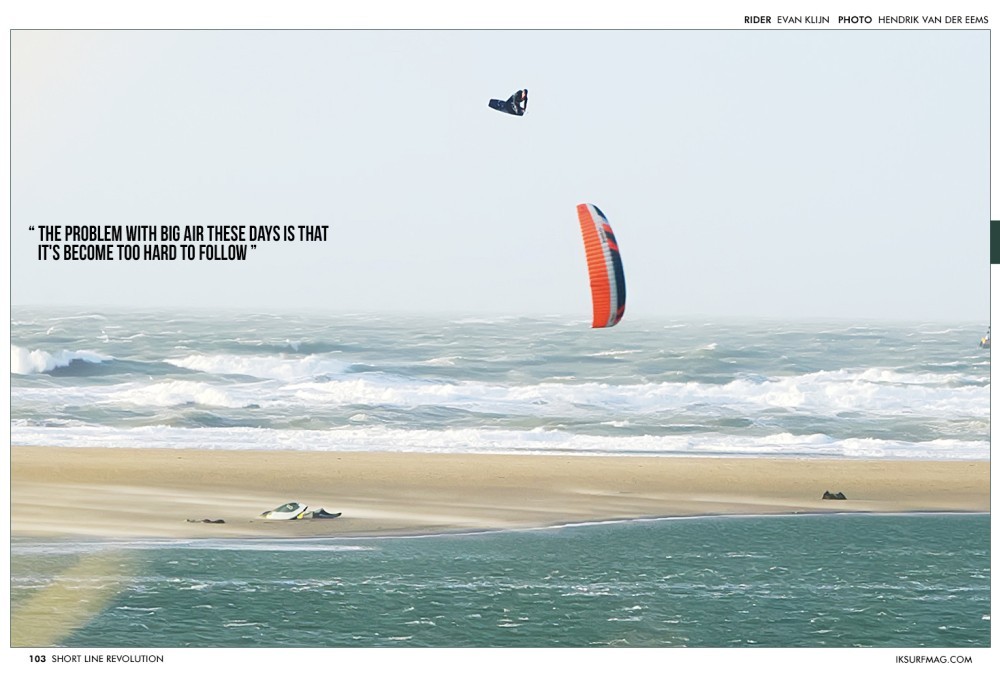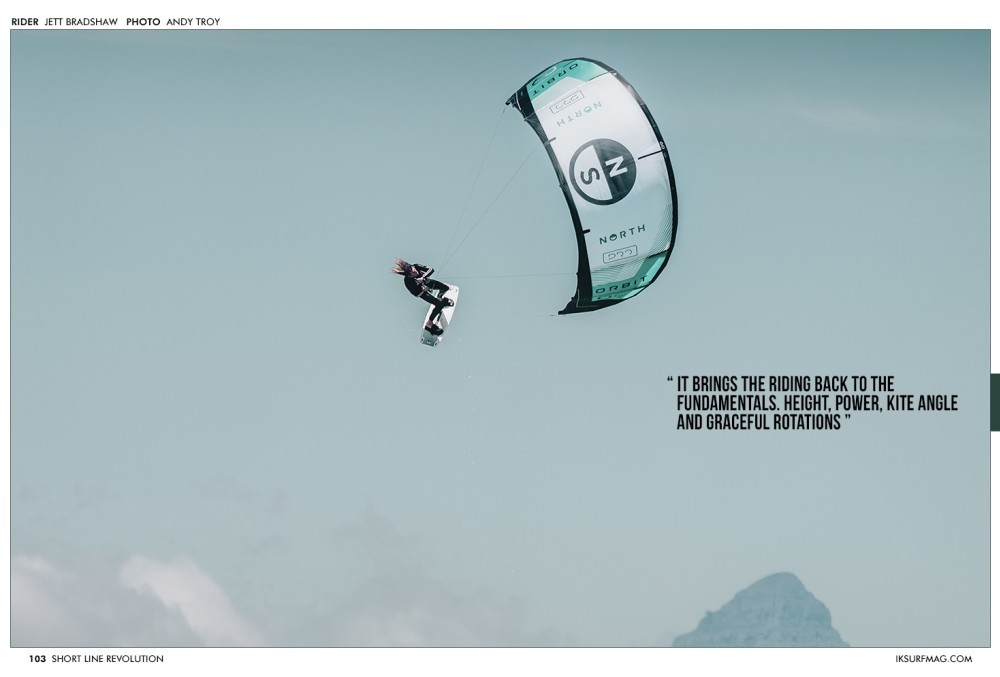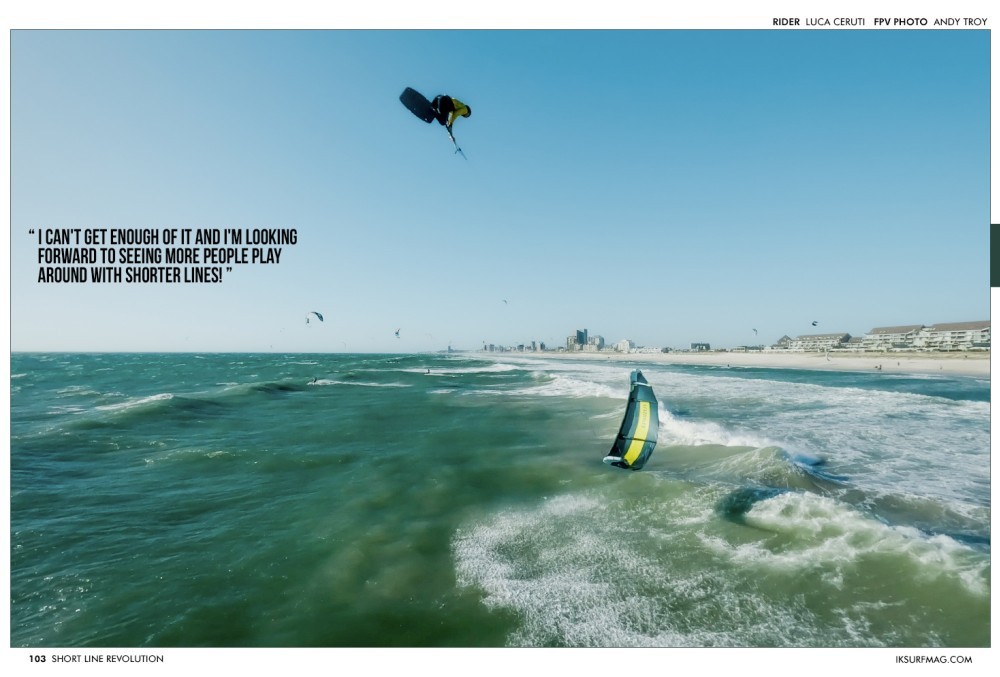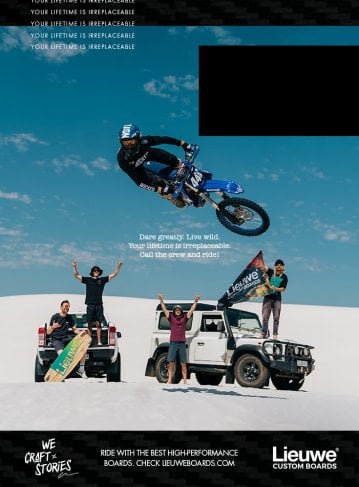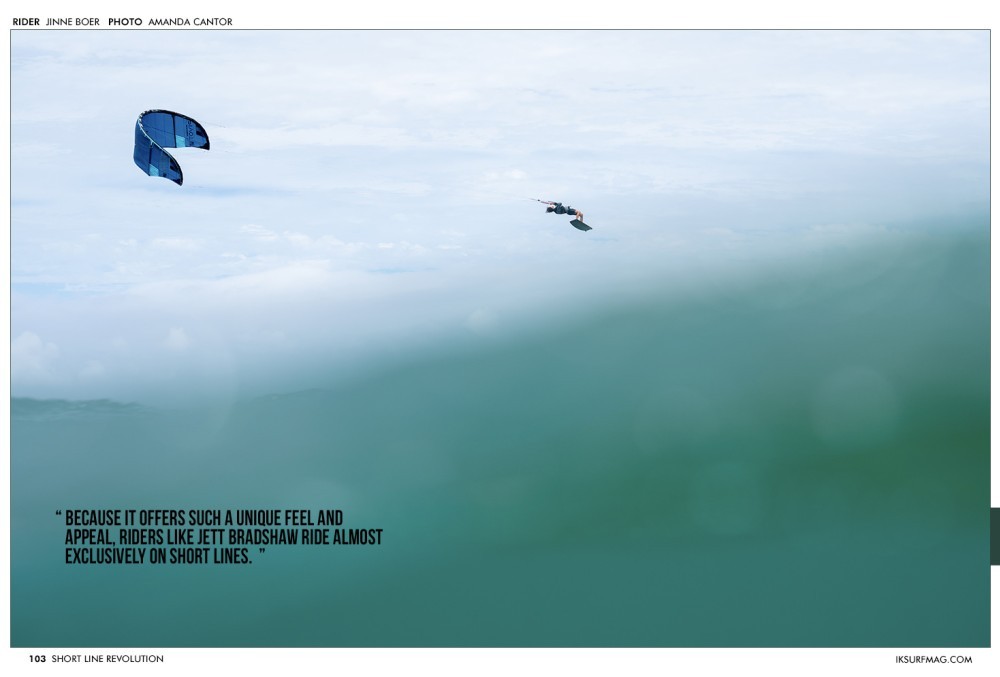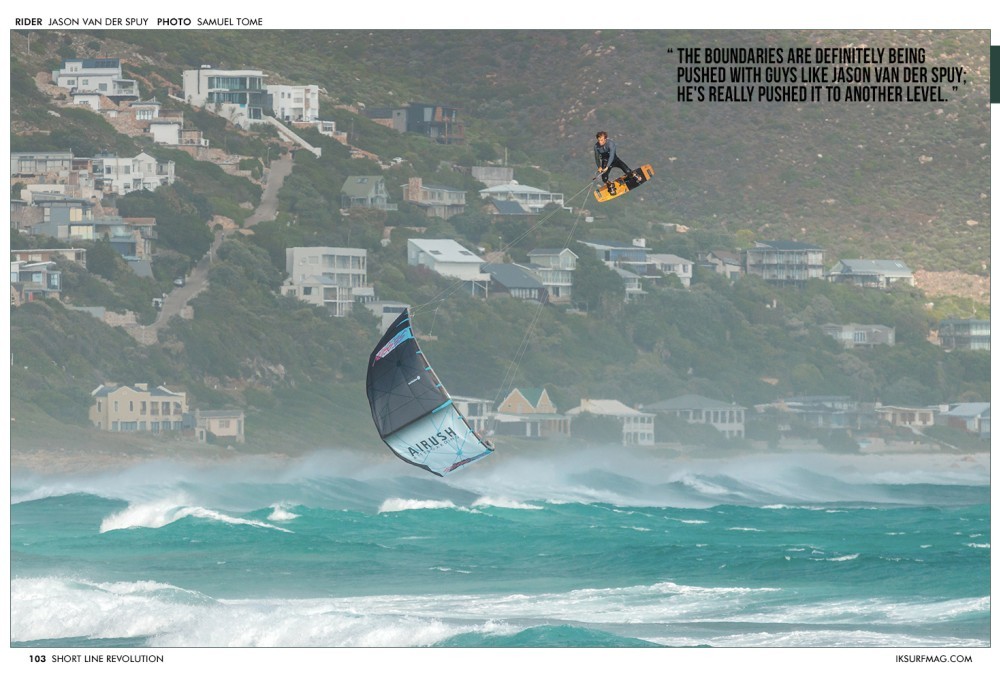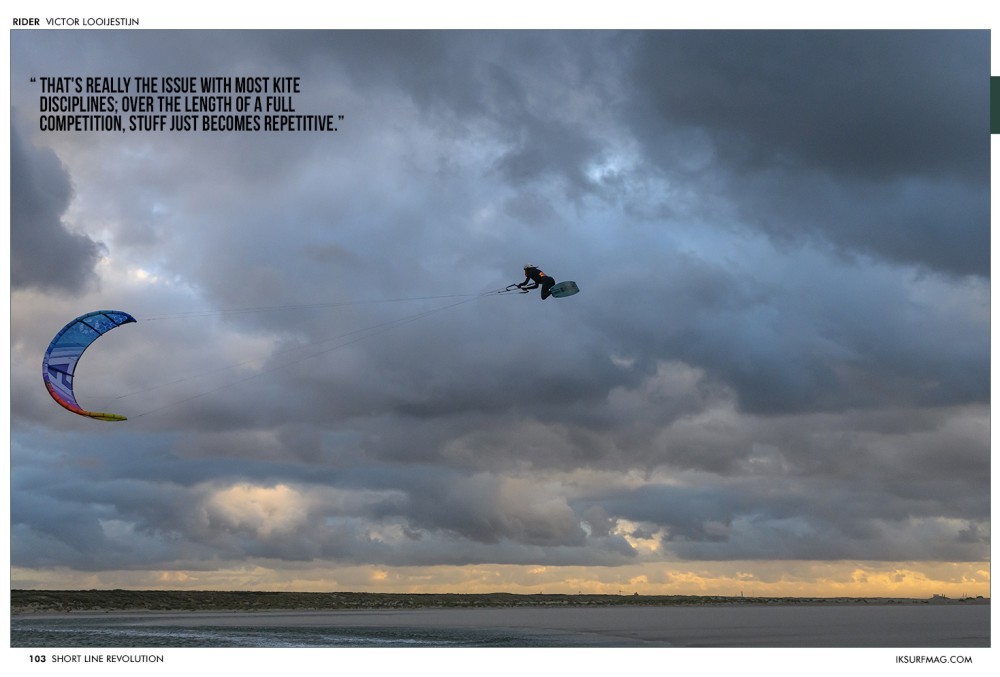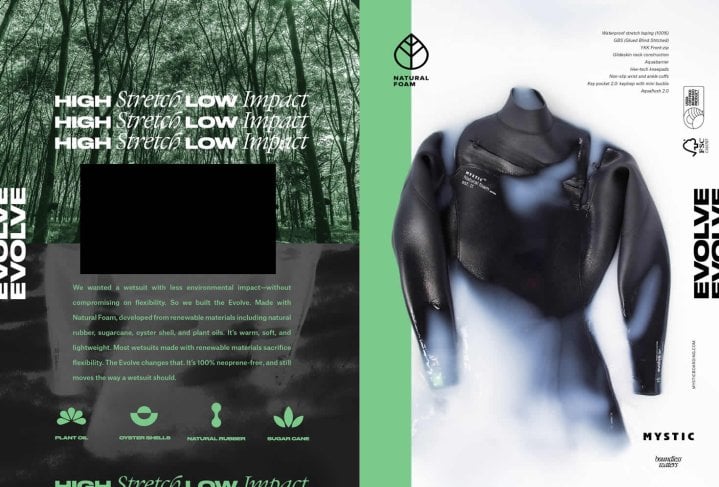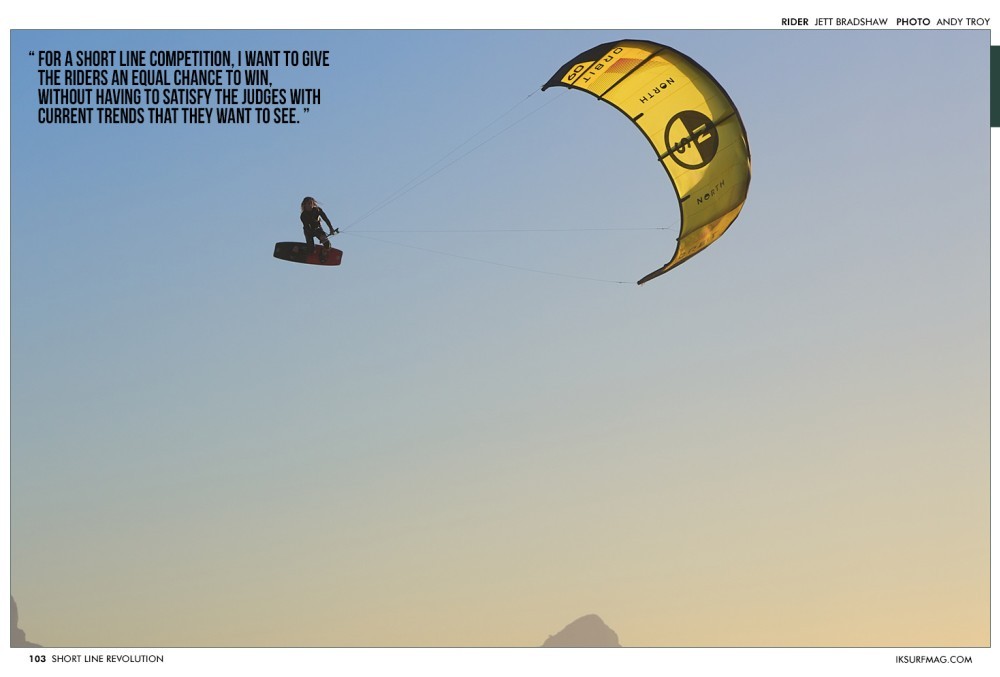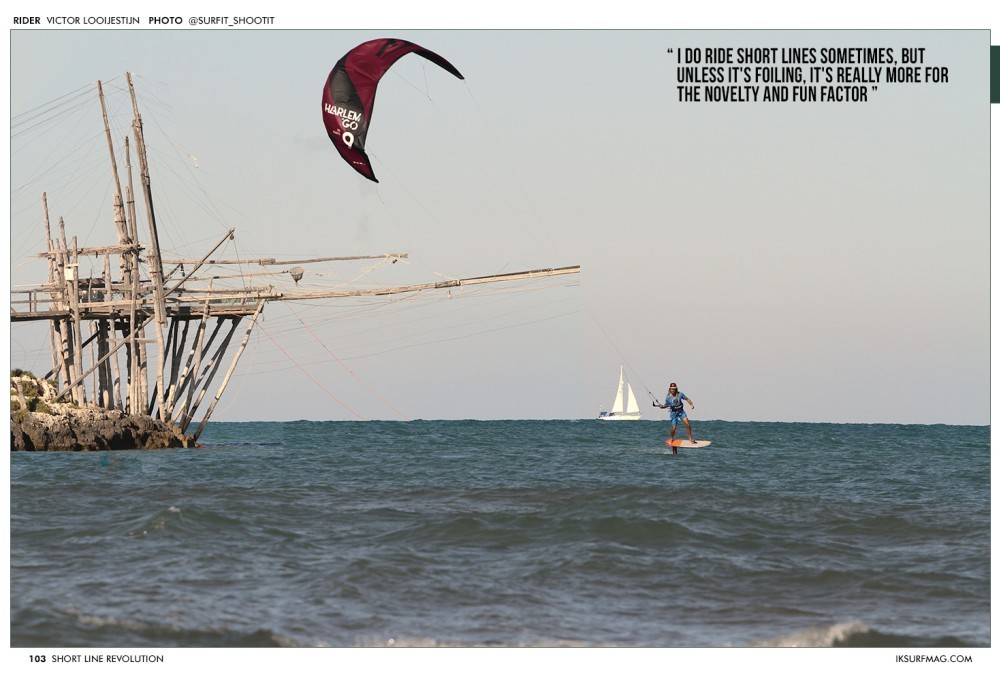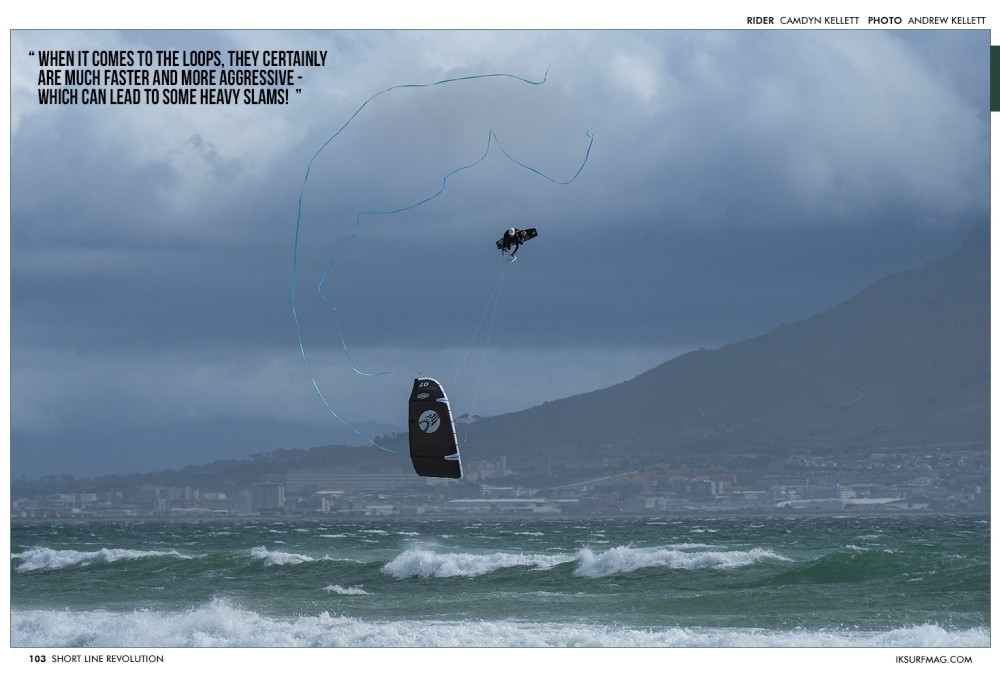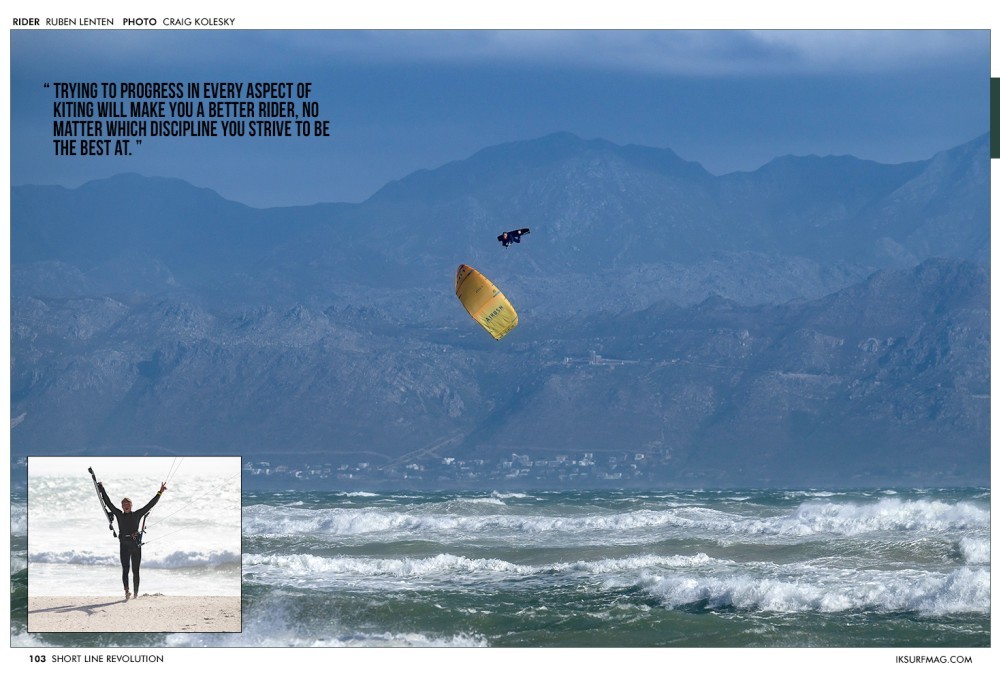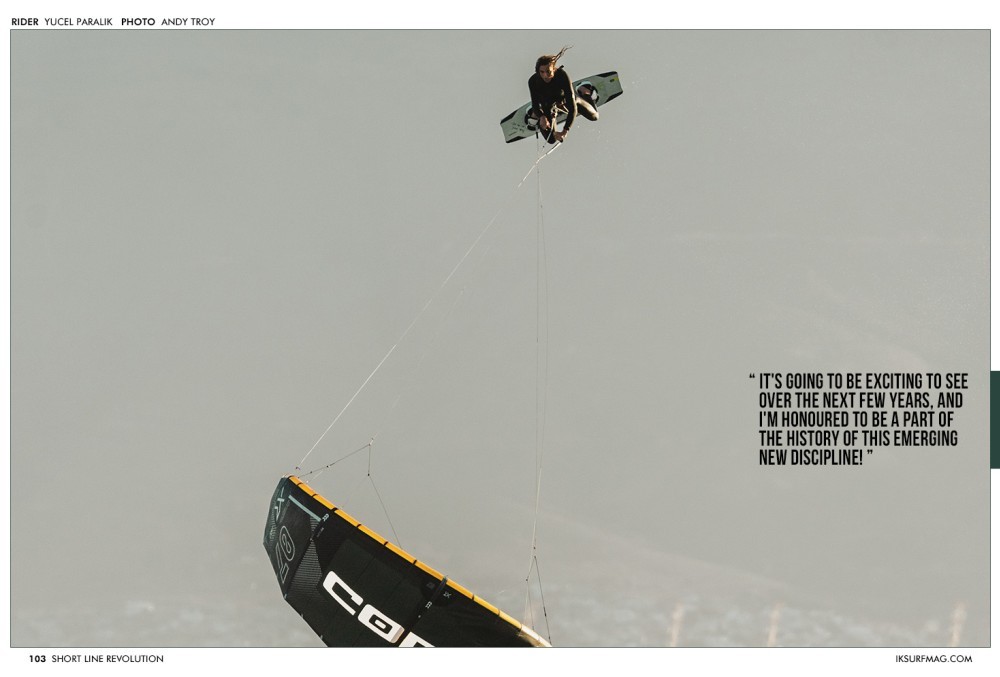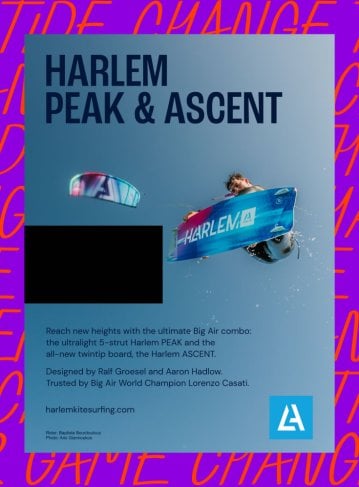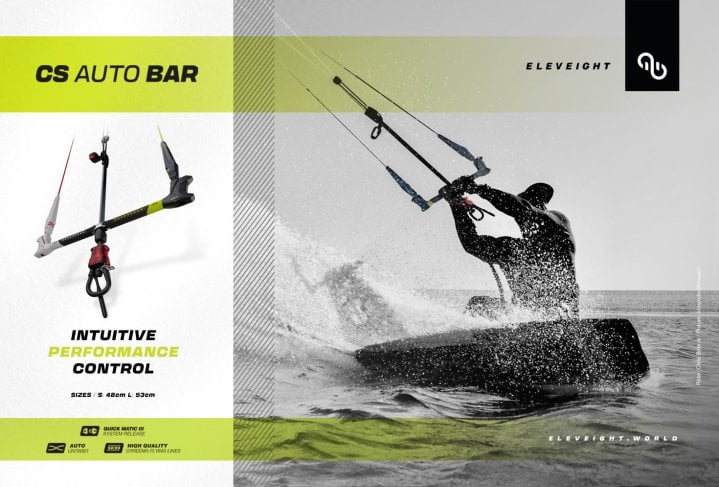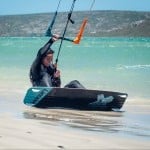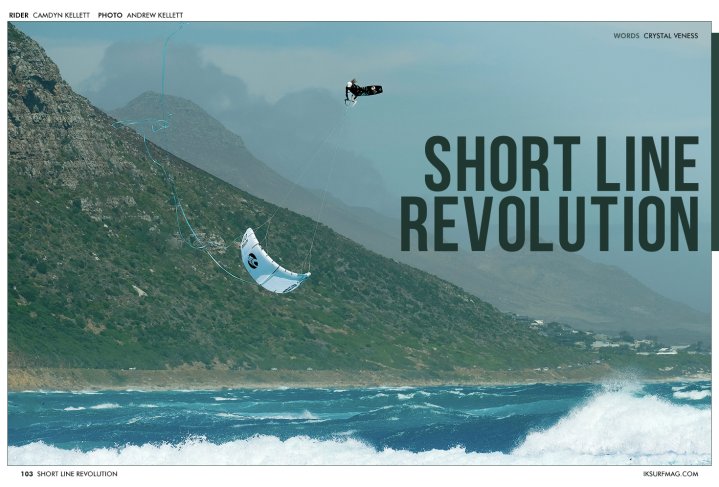
Short Line Revolution
Issue 103 / Mon 19th Feb, 2024
With big air kiteboarding reaching ultimate highs, one segment of the sport is all about reaching new lows. Short line big air has launched onto the scene as one of the most exciting and extreme categories of kiting. Is it the future? In this article, we take a look at the state of modern big air and connect with short line pros and industry insiders to offer some insights into the Short Line Revolution!
Do you hear that? The whisper in the air? It tells us that change is coming. On a grander scale, there are signs of change within the kite industry, much too complicated to unpack in a mere article. But, on the topic of big air, it's coming quickly. In fact, it may already be here. Rapid innovation and more technical tricks have the die-hard fans on the edges of their seats, waiting for their favourite rider to drop the latest world first. But, for the more casual consumers of big air content, things are getting a bit complicated.
A simple scroll on social media and reading the comments on the latest videos and reels is all it takes to see that the kiting public is divided on what modern big air should be. While some want to see the 40m jump record broken, others froth over the multiple spins and triple loops, and others just want to see extreme G-force megaloops with maximum height and power.
As usual, I'm on the fence. I love to see progress in any way, shape, or form. But what really gets me going is the shock and awe of standing on the beach and seeing something happen with my own two eyes that I can hardly comprehend. This happened during the Red Bull King of the Air final, but more recently, while watching the filming of the BAKL Battles Episode 3, which incorporated a short line loop category in the competition. You've got to watch that video, but seeing it happen live just about knocked my socks off.
For the first time in a long time, I had several "OH NO!" moments with my hands over my mouth, eyes popping out of my head, and a real fear that the riders would fall out of the sky and meet their early ends. Fortunately, these athletes are true professionals and survived to tell the tale. I've never seen anything quite as exciting as a kite almost touching the water with the rider 10 metres above it. The impossible is possible!
These last few big air competitions have marked a massive change in both the tricks that are being performed and how they're scored. So, is big air going in the right direction? One might argue that early editions of the Red Bull Megaloop Challenge were more intense to watch than the latest iteration in 2023, based purely on the extreme rider-to-kite angles. While we saw multiple loops and more rotations, that previously more popular kite swooping horizontally to, or even below the rider offered a "Holy shit, he's gonna die!" moment that, in my opinion, modern big air doesn't quite match. While it's going in an exciting direction, I'm sure we haven't seen the final form yet.
With another angle on the winds of change in big air, industry veteran Alexander James-Lewis Hughes shares his thoughts on the KOTA final, saying, "It did seem as though to me the criteria was leaning heavy on simple amplitude (as it always has), and that kite height during a loop (and even technicality, in my opinion) was an afterthought." He continues, acknowledging how equipment evolution has changed the game, "I guess part of the reason some people might not find kite loops that impressive anymore is because riders are riding kites that just don't yank and pull like older style (mostly C) kites did. It's also the main reason we are seeing people do 2 and 3 loops in a jump now; it's not that people didn't have the skill or balls to do that before, it's because, for the most part, the kites back then just couldn't do it easily or as safely."
Has big air gotten stale, or have we, as big air enjoyers, found ourselves oversaturated with the sheer amount of it that we're seeing in the media? Alexander offers up an interesting perspective, "One other thing you need to consider is that social media and brands have hyped and promoted big air so much in recent years that people could likely just be tired of seeing it; you can only see so much of something no matter how impressive it is until it becomes unimpressive..."
Michael MacDonald, founder of the Big Air Kite League, points out some of the issues the category is facing, saying, "The problem with big air these days is that it's become too hard to follow. It's kind of like freestyle kiteboarding in the spin-it-to-win-it era, where only a select few superfans know what tricks the riders are performing and who the 'best rider in the heat' is. When one of the many tricks we frequently see is called a front roll contra loop tic-tac late front with two added rotations, you know we've got a problem."
Is short lines the solution? Is a shift to something so fresh and surprising the answer to restoring a bit of spark into the segment of the kiting world that has gotten a bit blasé over big air? Michael says, "If we want big air kiting to become exciting for mainstream viewers, we need those viewers to be able to watch a heat, have a sense for who is likely to win it and be able to invest emotionally in the outcome. That's a recipe which makes a passionate spectator. Our solution here at The Big Air Kite League is to focus more on short line big air."
On the back-to-basics approach, or the reset that short line big air offers, Michael notes, "The beauty of short lines is not only that the kite goes low or yanks you like an F-16, but that the riders aren't currently able to perform as many technical manoeuvres which can be hard to follow during a trick. It brings the riding back to the fundamentals. Height, power, kite angle and graceful rotations - things that muggles can appreciate. We at BAKL are on a mission to grow this sport and bring it into the mainstream, and we are fired up to share the pinnacle of short line big air with the world! Watch Episode 3 of BAKL Battles if you want to see what I'm talking about!"
Where did this engaging style of kiting even come from? The early days of kiting saw a lot of experimentation, and while we don't have many records of all the wild and crazy things that the pioneers of kiting tried, short-line riding was definitely part of that period. Ruben Lenten recalls the beginning of this new style, saying, "The first short line loops were thrown on Maui by Lou Wainman, unhooked on 8m lines. It looked wild! Later on, I saw Bertrand Fleury and Jeff Tobias push them in 2003 on their Slingshot Fuels. Then, I did it but hooked in on my 9m Fuel and 15m lines around 2006 or so. Then Berny was obsessed with them on his Core kite and riding with boots. For a long long time, nobody really did anything with them until Joshua Emanuel came up with the Superloop. It's just such an extreme, fast and exciting way of riding. I can't get enough of it and I'm looking forward to seeing more people play around with shorter lines!"
One of the early adopters of short lines in modern times, Camdyn Kellett, shares how he discovered the discipline, "Before I even started kiting, I came across an old magazine with a picture of someone looping their kite level with them, and I just remember sitting and staring at this photo, trying to work out how it was possible. I spent some time on YouTube to see more, and I came across a few riders like Lou Wainman and Hamish McDonald from the early 2000s and Philip Zach a bit later on, who at the time was posting some radical short line videos. There were lots of other guys, but early YouTube made it pretty difficult to find information. Watching these guys perform loops like I've never seen before totally blew my mind and instantly drew me towards short lines!"
Alexander feels that modern short line loops are truly extreme and pay homage to the early interpretation of the kite loop, "They are just more radical and really encompass what the word 'kite loop' says to me in my head. It's also the way the original 'kite loops' were done; they were all initially done on short lines with the idea that you want to go above the kite. Jeff Tobias was the first to do them, Bertrand Fleury really took them to an extreme and Daniel Walstab (Balls) and David Boon (Boony) took it to the next level with KL360s, KL KGBs, and KL mobes."
Because it offers such a unique feel and appeal, riders like Jett Bradshaw ride almost exclusively on short lines. He describes this style of riding as 'Big Air's Ugly Sister', and thinks it's as sexy as it gets! Jett says, "Nothing compares visually to the 'violent' display of a short line loop, ideally with a rotation thrown into the mix. The short line cultish following has grown in leaps and bounds, with more and more competition riders dabbling, wind permitting. It's got to become a brand favourite from a visual point of view. Photographers love these shots!" Adding a final thought, Jett says, "One issue with short lines is, once you've crossed to the dark side, it's impossible to go back!"
Jett has a point on the visual appeal, though, because short line photos are truly impressive, as you can see from the selection in this article. Andy Troy, a kite photographer, videographer, and drone pilot (who happens to be a great kiter and paraglider as well!), describes his experience capturing short line loops from behind the lens, "Short lines offer more opportunity for creativity for photography and videos. It's not super technical; everybody can understand it. The guy is flying high; the kite is going low. No difficult rotations, no board-offs, just radical kiting. With a camera, normally, it's pretty hard to capture different angles with the kite really high up, but with short lines, the framing is really tight, so you can do a bit more with the shots. When the rider is above the background and the kite lower, it just looks spectacular."
On the rise of short lines, Joshua Emanuel says, "It's incredible to see how many people have moved to adapting and learning to ride short lines. The boundaries are definitely being pushed with guys like Jason Van Der Spuy; he's really pushed it to another level. It's super impressive to see where the guys have taken it." Camdyn Kellett adds on the appeal of this style of kiting, "It's such a special feeling that you can only get by looping the kite under you, and when you land your biggest one yet, there's no feeling like it!"
Will short lines guide the future of competitive big air? Alexander James-Lewis Hughes says, "I don't know if making KOTA short line only is the answer, but personally speaking, I'd probably make time to watch it if they did. I really don't find the loops that 99% of people in KOTA are doing exciting to watch. That said, a whole competition of short line loops is also likely to get kinda boring. That's really the issue with most kite disciplines; over the length of a full competition, stuff just becomes repetitive."
Joshua Emanuel, big air kiter and 2017 winner of the Red Bull Megaloop Challenge, thinks there's some potential, saying, "I do think it may have a place in big air competition; it'll just be very interesting to see how it would be judged. And, obviously, how many riders would then be partaking in it? I do think it would be quite an extreme event to watch. I think it'd be interesting to see a competition-style format that is strictly short lines. And I think it could definitely change competition, but I don't see it being a mainstream sort of competition."
Camdyn Kellett sees the answer somewhere in the middle, "I don't think short lines will be the future, but instead, I believe it will have a place next to the other disciplines in the sport of kiting!" On the competition format, he says, "I think, currently, in standard big air competition, it's not feasible to ride short lines as a main setup or even as a kite change since the current judging doesn't score high enough on the kite angle and extremity. If you're going for a large variety score, you'd have to ride three kite setups if you're aiming for double loop variations, big single loop variations and short line variations. With such a big emphasis on height and variations, short lines don't really fit into the current judging system. Who knows, maybe next year short lines could play the system and generate some high-scoring tricks, but it's probably too much of a risk for a serious competition rider to test it out. In short, a lot would have to change."
Camdyn worked with Michael MacDonald and the BAKL to come up with a judging system for a short line competition, and told us about the process, "This is a serious challenge for the judging team to undertake. The main reason being that compared to long lines, there is a really large range of tricks that are expected to be performed. Riders can choose 12m lines and a 9m kite to go super high and perform more technicality but with less kite angle and yank; on the flip side, another rider could take a 8m lines and a 7m kite and do a top to bottom superloop, practically getting their soul yanked out of their body for a second! It is a really fine line because if you weight the scoring unequally, you will influence certain tricks over others, and with riders having such different styles and tricks, you could easily give one rider a massive advantage. For a short line competition, I want to give the riders an equal chance to win, without having to satisfy the judges with current trends that they want to see. Short lines is one of the last uncontested disciplines, and it will be incredibly interesting to see how competitions go in the future!"
Offering a counter-point is Victor Looijestein from Harlem Kiteboarding, who believes that big air is about going big. He says, "To be honest, I do not see the future in short lines. Because, still, the biggest stoke is to see someone go 30m high and just yank it low. Yes, if you can go high on short lines, it's sick, but most people do not get high and only get the angle."
Victor offers up an alternative, though, as he is still an enjoyer of short lines, but not in the way you might think! "For me, short lines is a way to get the mind back to basics as you always think about technical tricks, and with short lines, it's just feeling the kite go. Even more than in 35 knots, I love the short lines on a foil for a nice around the world with no wind working against the elements."
Alexander James Lewis Hughes also sees some potential for short lines outside of big air and shares his experiences, "I do ride short lines sometimes, but unless it's foiling, it's really more for the novelty and fun factor than anything else. I've hit rails unhooked on 5m lines on a 7m kite before, something I've still never seen someone else recreate - and they shouldn't, haha, it was bad. For foiling, I mix it up with anything from 5m to 18m lines, but around 11-13m seems to be a happy medium for my style of foiling."
Have you considered trying short lines yourself? It seems accessible enough, but safety is, of course, one of the primary concerns. The rising popularity and complexity of big air has led to a lot more accidents and injuries. It's awesome to have progression on your mind, but we're not all meant to be superheroes. If you're thinking of joining the revolution, our advice is to make sure you've got good medical aid, go slow and steady, and ride with safety in mind. With that said, we've collected some advice from a few of the most experienced riders out there to help you get started!
Camdyn Kellett shares, "As long as you can kite, anybody can ride short lines with just about any kite! A common application for short lines is kitefoiling. When the wind is up a bit more than expected, you can just throw on a set of 12-18m lines and you will feel noticeably less power in the kite. Same for a twintip! When it comes to the loops, they certainly are much faster and more aggressive - which can lead to some heavy slams! The thing with short lines is that it's pretty tough to get above 10m high, which is kind of good because even if everything goes wrong, you're not falling from 15m+! The kite also goes above your head and catches you much faster, which is much better than being fully dropped out of the sky. The catch is that you need to get your steering nearly perfect to land soft, which is certainly a skill that you can only learn with time."
On learning short line loops in high winds, Camdyn adds, "You need to be happy to huck yourself into the unknown and take a few beatings - when you have friends around, this becomes a lot more fun!! You will learn some hard lessons on short lines, but that makes you progress quickly and when you ride long lines, certain things will carry over and I found that it made me a much better rider - especially in strong wind! Trying to progress in every aspect of kiting will make you a better rider, no matter which discipline you strive to be the best at."
Joshua Emanuel helps with a bit of a roadmap to learn short line big air safely, saying, "I would say it's definitely best to work your way down to shorter lines. If you're currently riding 22 metre lines, make your way to 18s, then maybe go down to 16s, 14s, 12s, and 10. When you really want to push it, you can obviously take it down to 8m lines, but the shorter you go, the less control you start to have because everything happens a lot faster. You start to lose your uplift that you get when you start to land, so everything happens two times faster for every little bit you take off your line lengths."
On the future of short line kiteboarding, Camdyn shares his final thoughts, "Over the last five years, the evolution of the gear we use has expanded the possibilities of short lines, and every year it's getting easier to perform the same tricks with a much larger safety margin. In the future, I foresee individual styles emerging in the short line space instead of the handful of riders who have unlocked near vertical superloops. It's going to be exciting to see over the next few years, and I'm honoured to be a part of the history of this emerging new discipline!"
There's definitely something to this short line business, and, for the everyday kiter, there's some room to play around with line lengths to spice up the sessions a bit, whether it be on a twintip or foil. Change is fun, and we're looking forward to seeing if this Short Line Revolution takes flight!
Videos
By Crystal Veness
Editor at IKSURFMAG, Crystal Veness hails from Canada but is based in South Africa. When she isn't busy kitesurfing or reporting on the latest industry news for the mag, she is kicking back somewhere at a windy kite beach or working on creative media projects.




